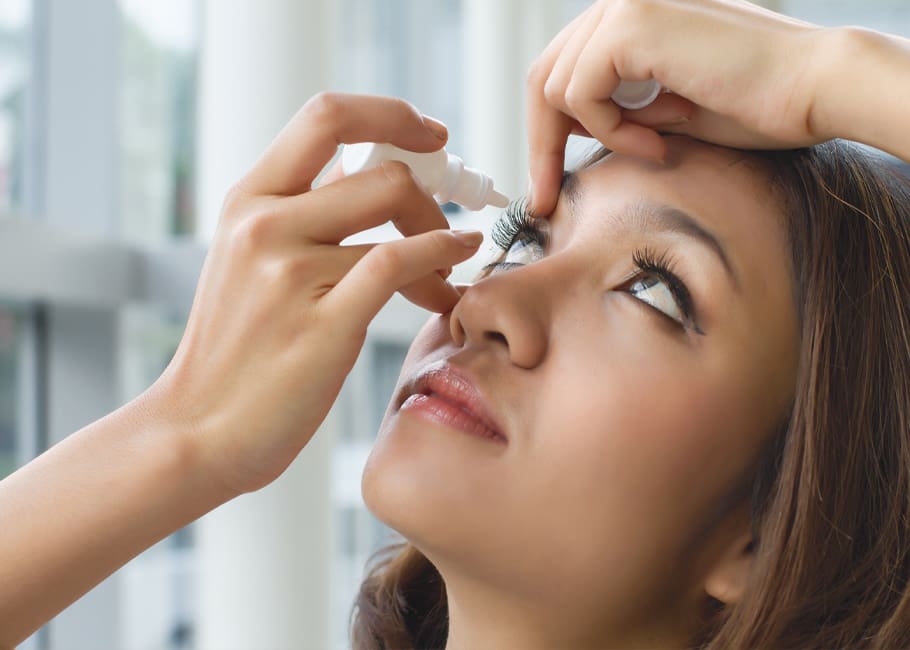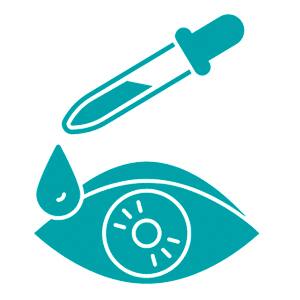
Dry eye distress
Learn what causes the irritation and how you can relieve it
Have you ever experienced the sensation of having something in your eye, and it just won’t let up? It may not be a loose eyelash. A gritty feeling is one symptom of dry eye disease.
Dry eye occurs when your eyes do not produce enough tears, or your tears don’t work correctly to lubricate your eyes. Other symptoms include burning, redness, sporadic blurred vision and, ironically, increased tearing. If left untreated, dry eye can affect your quality of life and, in rare, very severe cases, cause scarring on the cornea and a loss of vision.
Because dry eye results from a spectrum of underlying conditions, it is difficult to pinpoint how many Canadians are diagnosed annually. However, researchers estimate that more than 6 million Canadians are currently living with diagnosed dry eye disease, according to a 2019 article in the peer-reviewed journal The Ocular Surface.
Causes
The Canadian Medical Association Journal reports that up to 30% of people over the age of 50 are affected by dry eye. This is partially due to the fact that as people age, they are more likely to take prescribed medications. Some of these medications—most notably chemotherapy and meds that treat high blood pressure, anxiety and depression—can lead to dry eye.
Women are at a higher risk for developing dry eye, in part due to hormonal changes. These changes can affect the quality and quantity of tear film, the layer of tear fluid on the eye’s surface. Some autoimmune diseases, like psoriasis, rheumatoid arthritis and Sjogren’s syndrome, contribute too. Loose eyelids—the drooping of the upper eyelids, most commonly found among older adults due to aging—are another contributor.
However, the younger population is not immune. Dr. Pink Sidhu, an optometrist with Dr. Pink Sidhu & Associates in Toronto, Ontario, working independently as an optometrist in the Thorncliffe Park Costco location, is seeing an increase in the number of younger patients coming in.
“Children and young adults are on their devices longer than ever before. This creates a stare-and-glare evaporative dry eye symptom, directly related to evaporation of tears,” Sidhu says.
Cosmetic treatment like eyelash extensions, eyelash growth serums, extreme Botox treatments and eyelid tattoos can also bring on dry eye, says Dr. John Conto, an optometrist at Froedtert Hospital and the Medical College of Wisconsin Eye Institute. Some of these products and procedures are not tear-gland safe, Conto stresses, and are not always applied correctly.
Treating symptoms
If you are experiencing eye dryness, start by using preservative-free artificial tears, which can be found over the counter. Be sure to use them consistently throughout the day. If your eyes are not relieved, schedule an appointment with your optometrist. If you are diagnosed with dry eye, possible treatments include a tear-producing medication like lifitegrast (Xiidra) or cyclosporine (Restasis), tear duct plugs or, in rare cases, surgery.
Dry eye can be a pesky problem requiring only a minor addition to your daily routine. With the consistent use of artificial tears, most people find themselves feeling—and seeing—like their old selves.
Prevent dry eyes
Controlling your environment and maintaining a balanced diet can help keep dry eye away. Try these tips:
- When outside in the wind, wear protective or wraparound sunglasses.
- Use an air purifier or humidifier in your home.
- Add omega-3s to your diet. (Dr. John Conto recommends trying a daily multivitamin plus fish oil.)
- If you spend a lot of time at a computer screen, remember to look away from the screen frequently, and blink your eyes.—JW

VECTORS POINT / STOCK.ADOBE.COM.
Welcome tears
Lubricating eyes with artificial tears is the first line of defence against dry eye. Before you buy, understand the difference between artificial tears with preservatives and preservative- free artificial tears.
Artificial tears with preservatives come in multi-dose bottles. The chemicals inhibit the growth of bacteria after the bottle is opened but also may irritate the eyes. Preservative-free artificial tears, on the other hand, often come in small, single-dose vials and contain fewer additives. Recently, preservative-free, multi-dose bottles have also entered the marketplace. Both are sold over the counter.
Optometrists recommend preservative-free drops for dry eye. Keeping them handy—near your computer, for example—will help you remember to use them frequently throughout the day.—JW
Jenny Wisniewski is a freelance writer based in Milwaukee, Wisconsin.
COSTCO CONNECTION: Eye drops and vision supplements are available in Costco warehouses and at Costco.ca.

